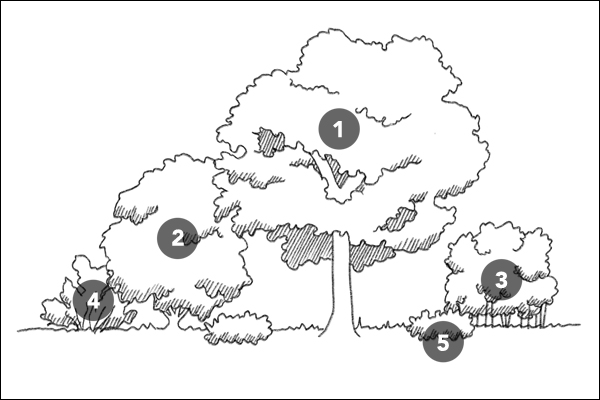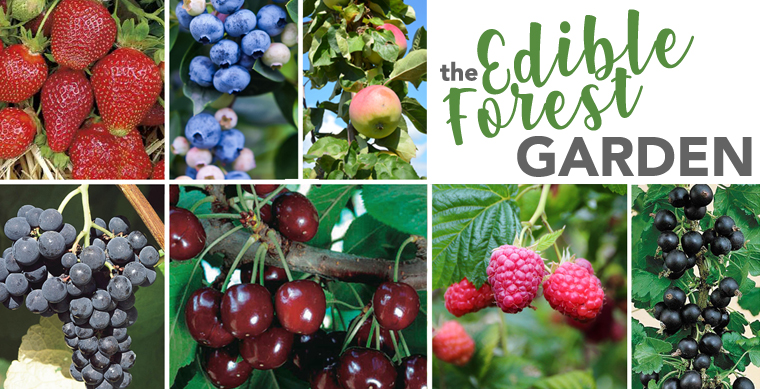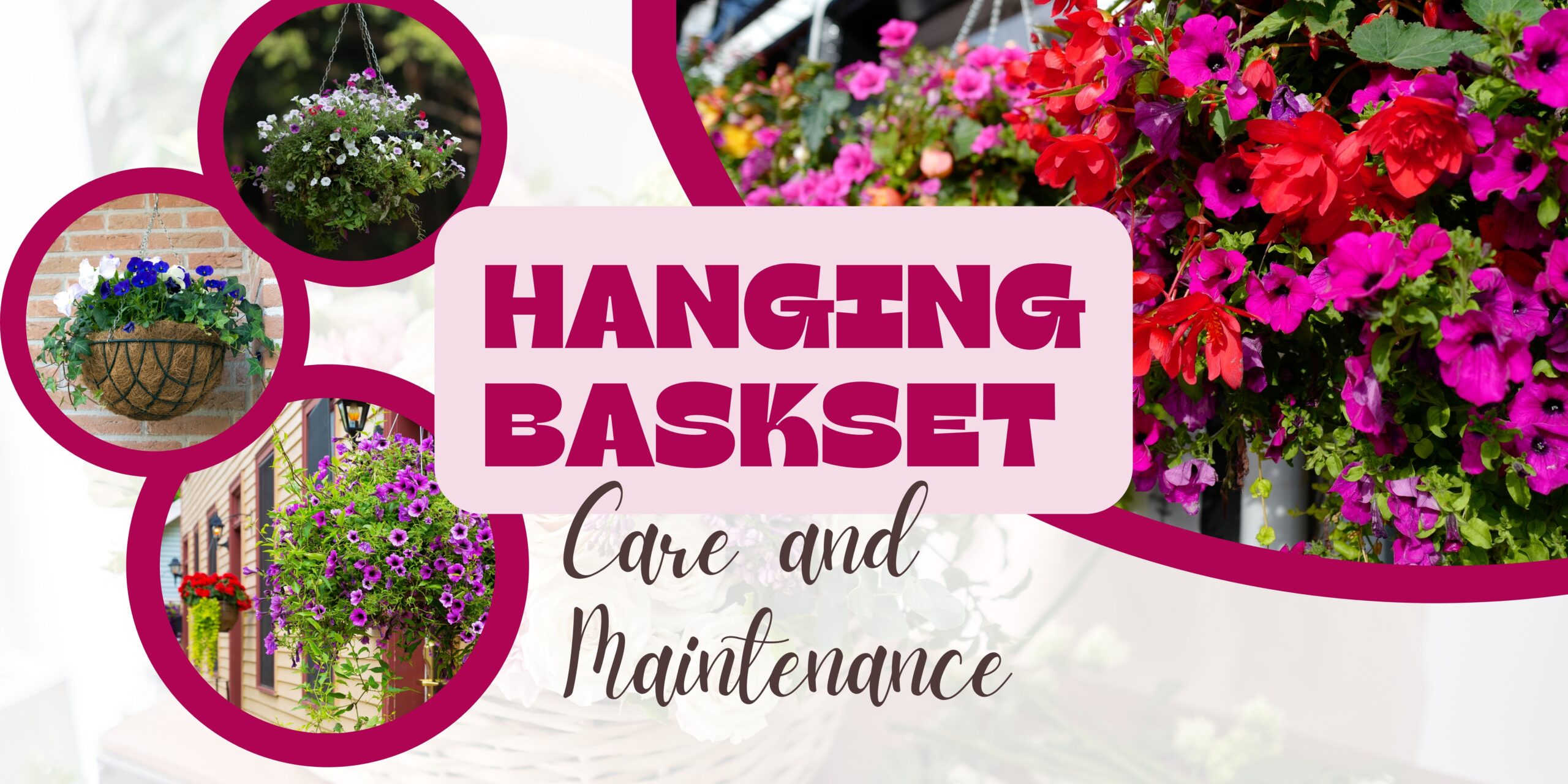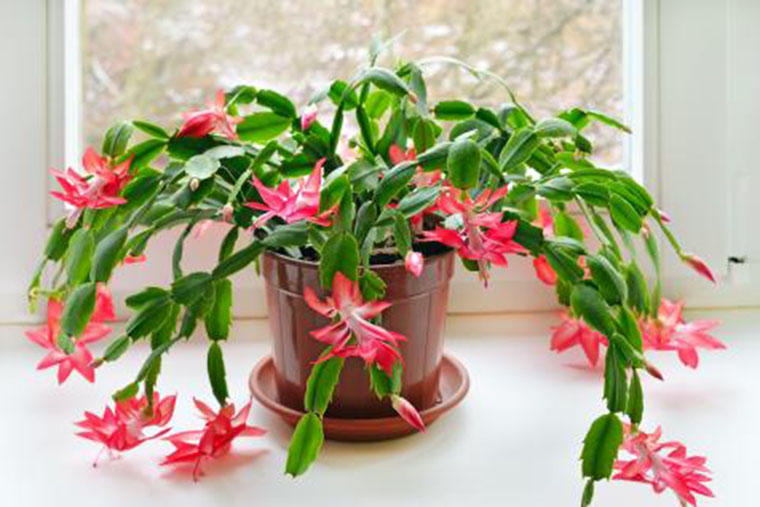What is an Edible Forest Garden?
An edible forest garden, sometimes called a food forest, is a diverse planting of edible plants that mimics the ecosystem of a forest. Forest gardens have been a standard for millennia in many tropical regions, but they are quickly becoming a popular choice in more temperate regions for their sustainability. Robert Hart first popularized the concept among European and North American gardeners alike with his publication of Forest Gardening: Cultivating an Edible Landscape in the 1980s. Since then, food forest designs have been incorporated regularly within the permaculture movement. Permaculture is a movement based around the ideology that sustainable and healthy agricultural systems should be designed to mimic natural ecosystems and patterns found in nature. When a forest garden is planned well, it will significantly decrease if not eliminate the need for tilling, weeding, and the use of fertilizers or pesticides. The key to a successful forest garden is finding the right balance of biodiversity.
Planning an Edible Forest Garden
Food forests are three dimensional designs, with life extending in all directions – up, down, and out. Generally, these diverse plantings, often called guilds, consist of several distinct layers of vegetation. Typically, a planting guild for a forest garden has at least is five layers – the overstory, the understory, the shrub layer, the herbaceous layer, and the ground cover layer. However, plantings can also include a climbing layer, an underground layer, a fungal layer, and, if the environment permits, an aquatic layer. Using these layers, it is possible to fit more plants in an area without creating competition of resources leading to a healthier and more sustainable system with higher yields.
The Five Primary Layers
1. Overstory : This layer is typically the central point for a plant guild and, in an edible garden, consists a single large fruit tree, such as an apple or pear.
2. Understory : This layer is typically placed to either side of the central tree, just past the larger tree’s drip line, and consists of a smaller tree or two, such as a cherry or plum. Larger shrubs that stand between 6 and 16 ft tall can also be included in this layer.
3. Shrub : Smaller shrubs between 2 and 6 ft tall make up the shrub layer. Typically, these are placed to the south of the larger plants for the adequate sun light required for fruit production.
4. Herbaceous : The herbaceous layer is made of herbaceous perennials when possible, but annuals can be planted from year to year. These plants are planted on the outer edges and in between other larger plantings, according to their individual environmental needs.
5. Ground Cover : The ground cover layer is an important layer to help deter weeds and other invasive plants from taking over the guild. This layer is usually planted with creeping perennials that will spread across the floor of the forest garden. A good choice for this layer is a mix of fruit bearers, such as strawberries, and nitrogen fixing plants, like clover.

Additional Layers
Climbing : Typically the climbing layer consist of vines that will grow vertically. Depending on the variety they may be allowed to climb the larger fruit trees or trellises can be placed where needed. Prairie hardy grapes and arctic kiwis are both good perennial options as are nitrogen fixing annuals, such as pole beans or peas.
Underground : The underground layer consist of root crops, annuals that can be planted from year to year, such as garlic, onions, etc. These crops not only maximize the use of space in a food forest, but they also offer the benefits of companion planting and help to deter certain pests.
Aquatic : If the space permits, an aquatic layer can also be added. This layer requires a small body of water to thrive, but can offer additional biodiversity to the planting.
Fungal : Many food foresters also include a mycelial or fungal layer with edible mushrooms. This further mimics the natural environment of a forest and maximizes the use of space.
Prairie Hardy Edible Plants
For additonal information on prairie hardy edible plants, please visit our Growing Edibles page.
Large Trees
APPLES :
Battleford Apple, Malus ‘Battleford’
Fall Red Apple, Malus ‘Fall Red’
Goodland Apple, Malus ‘Goodland’
Hardi-Mac Apple, Malus ‘Hardi-Mac’
Heyer #12 Apple, Malus ‘Heyer #12’
Honeycrisp Apple, Malus ‘Honeycrisp’
Norkent Apple, Malus ‘Norkent’
Norland Apple, Malus ‘Norland’
Parkland Apple, Malus ‘Parkland’
CRABAPPLES :
Dolgo Crabapple, Malus ‘Dolgo’
Rescue Crabapple, Malus ‘Rescue’
Kerr Crabapple, Malus ‘Kerr’
Small Trees
CHERRIES :
Evans Sour Cherry Tree, Prunus cerasus ‘Evans’
Carmine Jewel Cherry Tree, Prunus x kerrasis ‘Carmine Jewel’
Crimson Passion Cherry Tree, Prunus x kerrasis ‘Crimson Passion’
Cupid Cherry Tree, Prunus x kerrasis ‘Cupid’
Juliet Cherry Tree, Prunus x kerrasis ‘Juliet’
PLUMS :
Waneta Plum, Prunus americana ‘Waneta’
Mount Royal Plum, Prunus ‘Mount Royal’
Pembina Plum, Prunus ‘Pembina‘
Brookgold Plum, Prunus salicina ‘Brookgold’
Brookred Plum, Prunus salicina ‘Brookred’
Toka Plum, Prunus ‘Toka’
CHERRY-PLUMS :
Compass Cherry-Plum, Prunus bess. x P. hortulana ‘Compass’
Sapalta Cherry-Plum, Prunus bess. x P. salicina ‘Sapalta’
Edible Shrubs
HASKAPS :
Aurora Haskap, Lonicera cae. kamtschatica ‘Aurora’
Borealis Haskap, Lonicera cae. kamtschatica ‘Borealis
Honey Bee Haskap, Lonicera cae. kamtschatica ‘Honey Bee’
Polar Jewel Haskap, Lonicera cae. kamtschatica ‘Polar Jewel’
Tundra Haskap, Lonicera cae. kamtschatica ‘Tundra’
Combo Polar Haskap, Lonicera cae. kamtschatica ‘Polar’ Combo
CHERRIES :
Evans Sour Cherry Shrub, Prunus cerasus ‘Evans’
Carmine Jewel Cherry Shrub, Prunus x kerrasis ‘Carmine Jewel’
Crimson Passion Cherry Shrub, Prunus x kerrasis ‘Crimson Passion’
Cupid Cherry Shrub, Prunus x kerrasis ‘Cupid’
Juliet Cherry Shrub, Prunus x kerrasis ‘Juliet’
 |
| 



